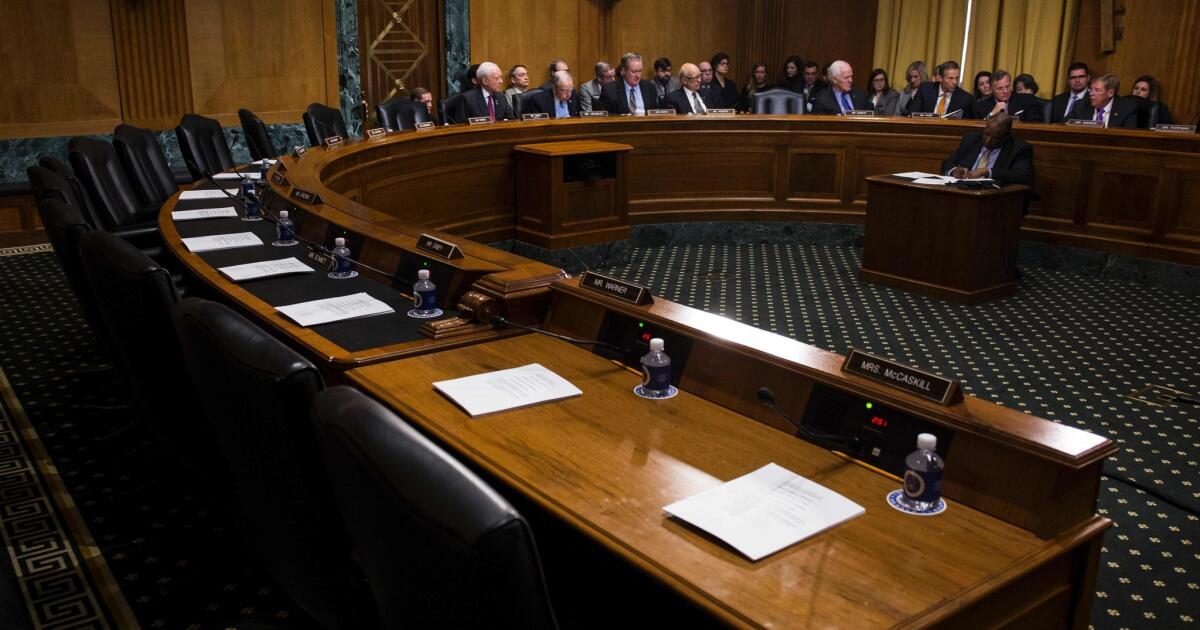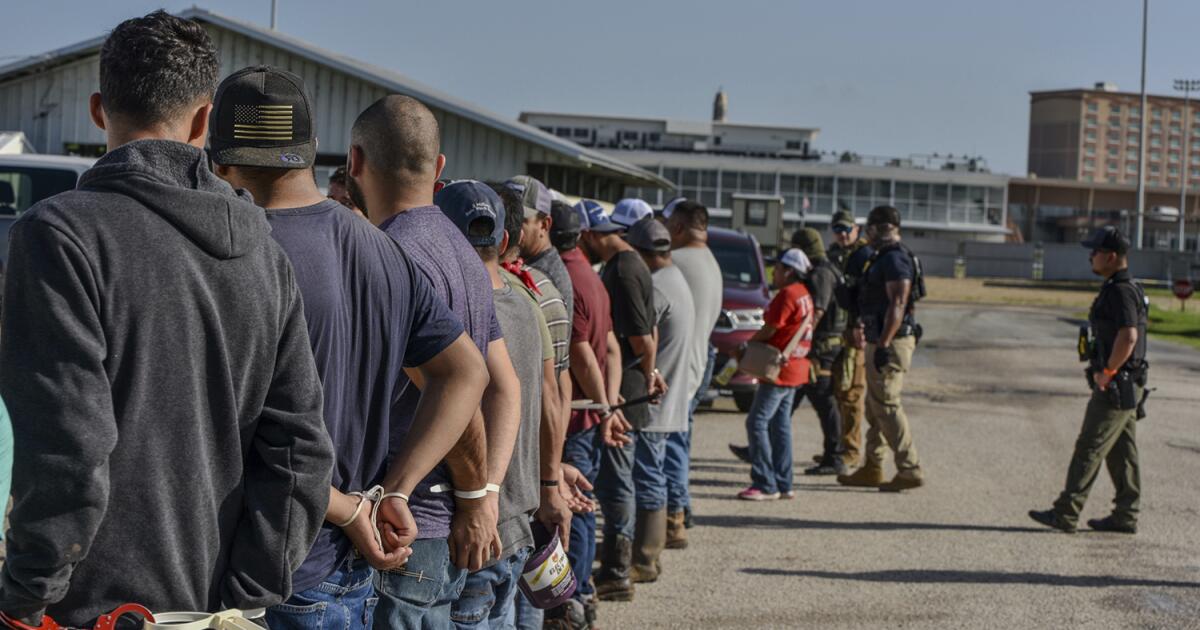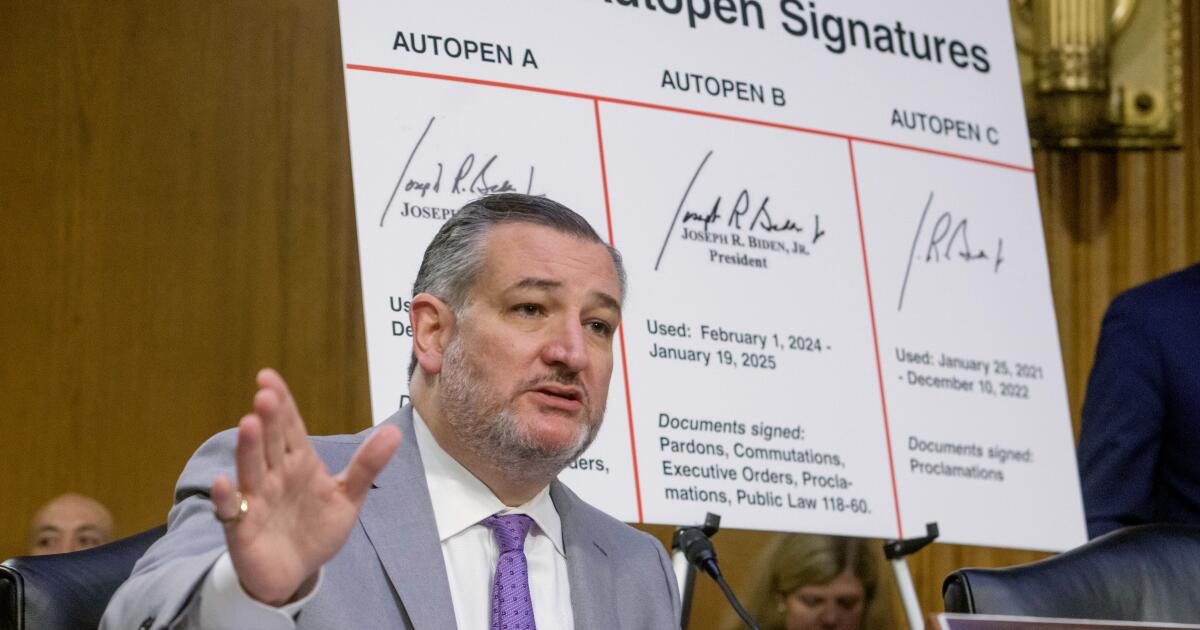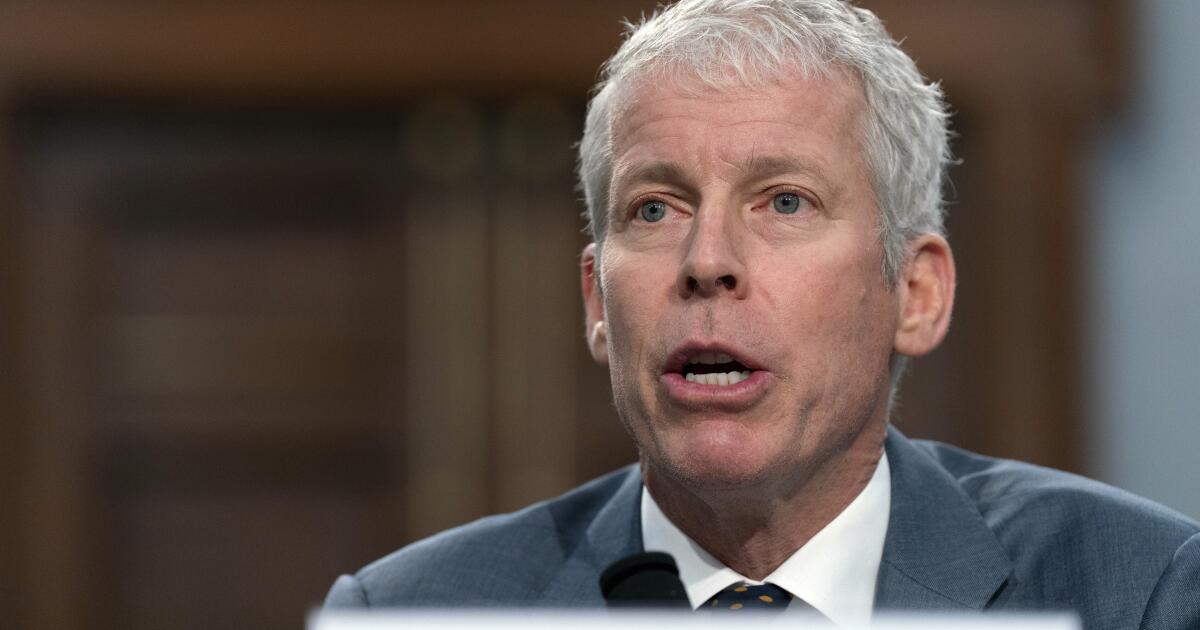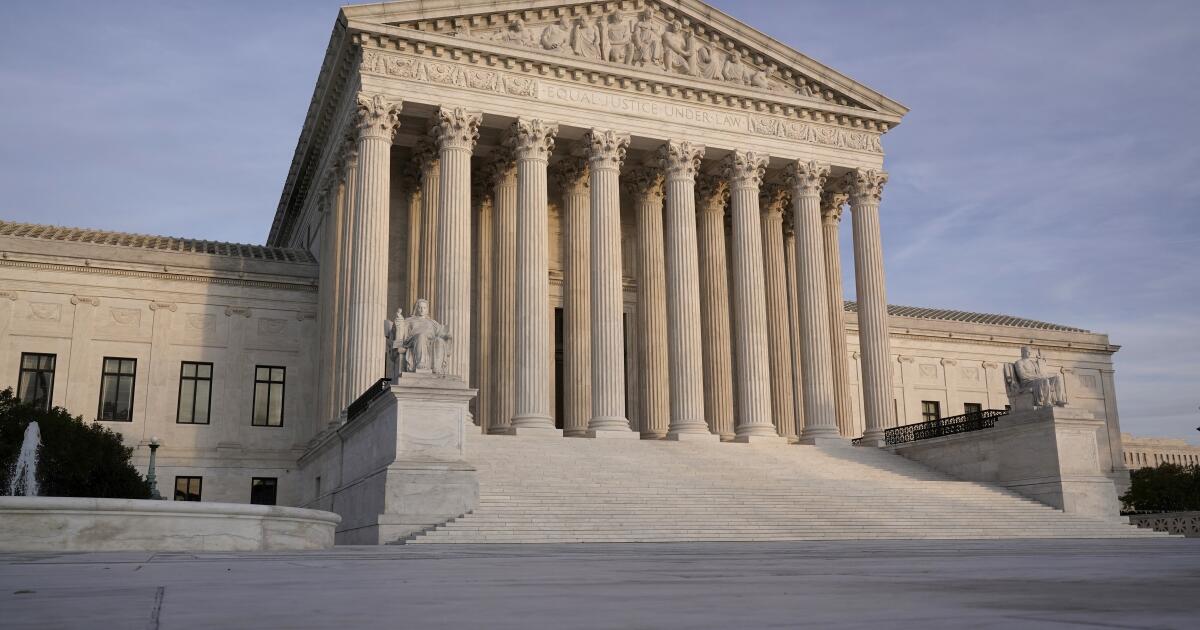Detectives investigating UCLA student’s murder uncover stunning betrayal
The railroad tunnel in which John Doe #135 was found had spooky graffiti and a dark mystique, the kind of place kids dared each other to walk through at night. People called it the Manson Tunnel — the cult leader and his disciples had lived nearby at the Spahn Movie Ranch — and someone had spray-painted HOLY TERROR over the entrance.
By June 1990, occult-inspired mayhem had become a common theme in the Los Angeles mediasphere. The serial killer known as the Night Stalker, a professed Satanist, had been sentenced to death a year before, and the McMartin Preschool molestation case, with its wild claims of ritual abuse of children, was still slogging through the courts.
So when venturesome local teenagers discovered a young man’s body in the pitch-black tunnel above Chatsworth Park, the LAPD considered the possibility of occult motives. The victim was soon identified as Ronald Baker, a 21-year-old UCLA student majoring in astrophysics. He had been killed on June 21, a day considered holy by occultists, at a site where they were known to congregate.
Ronald Baker in an undated photo.
(Courtesy of Patty Elliott)
Baker was skinny and physically unimposing, with a mop of curly blond hair. He had been to the tunnel before, and was known to meditate in the area. He had 18 stab wounds, and his throat had been slashed. On his necklace: a pentagram pendant. In the bedroom of his Van Nuys apartment: witchcraft books, a pentagram-decorated candle and a flier for Mystic’s Circle, a group devoted to “shamanism” and “magick.”
Headline writers leaned into the angle. “Student killed on solstice may have been sacrificed,” read the Daily News. “Slain man frequently visited site of occultists,” declared The Times.
Baker, detectives learned, had been a sweet-tempered practitioner of Wicca, a form of nature worship that shunned violence. He was shy, introverted and “adamantly against Satanism,” a friend said. But as one detective speculated to reporters, “We don’t know if at some point he graduated from the light to the dark side of that.”
Investigators examine the scene where Ronald Baker’s body was found.
(Los Angeles Police Department )
People said he had no enemies. He loved “The Rocky Horror Picture Show” singalongs, and worked a candle-making booth at Renaissance faires. He had written his sister a birthday card in Elizabethan English.
Had he gone into the hills to meditate and stumbled across practitioners of more malignant magic? He was known as a light drinker, but toxicology results showed he was heavily drunk when he died.
Had someone he trusted lured him to the tunnel? How was his death connected to the raspy-voiced man who placed calls to Baker’s father around that time, demanding a $100,000 ransom in exchange for his son’s life?
U.S. Army photo of Nathan Blalock.
(U.S. Army)
Baker’s housemates, Duncan Martinez and Nathan Blalock, both military veterans in their early 20s, had been the last known people to see him alive, and served as each other’s alibis. They said they had dropped him off at a Van Nuys bus stop, and that he had planned to join his Mystic’s Circle friends for the solstice.
There had been no sign of animosity between the roommates, and Baker considered Martinez, an ex-Marine, one of his best friends. They had met working at Sears, years earlier.
Martinez helped to carry Baker’s casket and spoke movingly at his memorial service at Woodland Hills United Methodist Church. His friend was “never real physically strong, like a lot of the guys I know,” Martinez said, but was the “friendliest, sweetest guy.”
His voice filled with emotion. “He would talk to anybody and be there for anybody at the drop of a dime,” Martinez continued. “And I just hope that it’s something I can get over, because I love him. It’s just hard to think of a time without Ron.”
But something about the roommates’ story strained logic. When Baker’s father had alerted them to the ransom calls, the roommates said they had looked for him at Chatsworth Park, knowing it was one of Baker’s favorite haunts. Why would they assume a kidnapper had taken him there?
Duncan Martinez in an LAPD interview room.
(Los Angeles Police Department)
There was another troubling detail: Martinez had cashed a $109 check he said Baker had given him, but a handwriting expert determined that Baker’s signature was forged.
Martinez agreed to a polygraph test, described his friend’s murder as “a pretty unsensible crime” and insisted he had nothing to do with it. “I’ve never known anybody to carry a grudge or even dislike Ron for more than a minute, you know,” Martinez said.
The test showed deception, and he fled the state. He was gone for nearly 18 months.
He turned up in Utah, where he was arrested on a warrant for lying on a passport application. He had been hoping to reinvent himself as “Jonathan Wayne Miller,” an identity he had stolen from a toddler who died after accidentally drinking Drano in 1974, said LAPD Det. Rick Jackson, now retired. Jackson said Martinez sliced the child’s death certificate out of a Massachusetts state archive, hoping to disguise his fraud.
In February 1992, after being assured his statement could not be used against him, Martinez finally talked. He said it had been Blalock’s idea. They had been watching an old episode of “Dragnet” about a botched kidnapping. Martinez was an ex-Marine, and Blalock was ex-Army. With their military know-how, they believed they could do a better job.
They lured Baker to the park with a case of beer and the promise of meeting girls, and Blalock stabbed him with a Marine Corps Ka-Bar knife Martinez had lent him. Baker begged Martinez for help, and Martinez responded by telling his knife-wielding friend to finish the job.
“I told him to make sure that it was over, because I didn’t want Ron to suffer,” Martinez said. “I believe Nathan slit his throat a couple of times.” He admitted to disguising his voice while making ransom calls to Baker’s father.
But he never provided a location to deliver the ransom money. The scheme seemed as harebrained as it was cruel, and Martinez offered little to lend clarity. He sounded as clueless as anyone else, or pretended to be. “You know, it doesn’t completely click with me either,” he said.
“They ruined their lives, and all of the families’ lives, with the stupidest crime,” Patty Baker Elliott, the victim’s elder sister, told The Times in a recent interview.
Ronald and Patty Baker at her college graduation in the 1980s.
(Courtesy of Baker family)
In the end, the occult trappings were a red herring, apparently intended to throw police off the scent of the real culprits and the real motive.
The killers “set this thing up for the summer solstice, because they knew he wanted to be out, hopefully celebrating the solstice,” Jackson said in a recent interview. “What are the chances, of all the days, this is the one they choose to do it on?”
Jackson, one of the two chief detectives on the case, recounts the investigation in his book “Black Tunnel White Magic: A Murder, a Detective’s Obsession, and ‘90s Los Angeles at the Brink,” which he wrote with author and journalist Matthew McGough.
Blalock was charged with murder. To the frustration of detectives, who believed him equally guilty, Martinez remained free. His statements, given under a grant of immunity, could not be used against him.
Det. Rick Jackson in the LAPD’s Robbery Homicide Division squad room.
(Los Angeles Police Department )
“I almost blame Duncan more, because he was in the position, as Ron’s best friend, to stop this whole thing and say, ‘Wait a minute, Nathan, what the hell are we talking about here?’” Jackson said. “He didn’t, and he let it go through, and what happened, happened.”
Martinez might have escaped justice, but he blundered. Arrested for burglarizing a Utah sporting goods store, he claimed a man had coerced him into stealing a mountain bike by threatening to expose his role in the California murder.
As a Salt Lake City detective recorded him, Martinez put himself at the scene of his roommate’s death while downplaying his guilt — an admission made with no promise of immunity, and therefore enough to charge him.
“That’s the first time we could legally put him in the tunnel,” Jackson said.
Jurors found both men guilty of first-degree murder, and they were sentenced to life without the possibility of parole.
In June 2020, Baker’s sister was startled to come across a news site reporting that Gov. Gavin Newsom had intervened to commute Martinez’s sentence, making him eligible for parole. No one had told her. The governor’s office said at the time that Martinez had “committed himself to self-improvement” during his quarter-century in prison.
The news was no less a shock to Jackson, who thought the language of the commutation minimized Martinez’s role in concocting the kidnapping plan that led to the murder. He said he regarded Martinez as a “pathological liar,” and one of the most manipulative people he’d met in his long career.
Martinez had not only failed to help Baker, but had urged Blalock to “finish him off” and then posed as a consoling friend to the grieving family. The victim’s sister remembers how skillfully Martinez counterfeited compassion.
“He hugged everybody and talked to everybody at the service,” she said. “He cried. He got choked up and cried during his eulogy.”
A prosecutor intended to argue against Martinez’s release at the parole hearing, but then-newly elected L.A. Dist. Atty. George Gascon instituted a policy forbidding his office from sending advocates. The victim’s sister spoke of her loss. Jackson spoke of Martinez’s gift for deception.
“It was like spitting into the wind,” Jackson said.
The parole board sided with Martinez, and he left prison in April 2021. Blalock remains behind bars.
Rick Jackson and Matthew McGough, authors of “Black Tunnel White Magic.”
(JJ Geiger)
For 35 years now, the retired detective has been reflecting on the case, and the senselessness at its core. Jackson came to think of it as a “folie à deux” murder, a term that means “madness of two” and refers to criminal duos whose members probably would not have done it solo. He regarded it as “my blue-collar Leopold and Loeb case,” comparing it to the wealthy Chicago teenagers who murdered a boy in 1924 with the motive of committing the perfect crime.
An old cop show about a kidnapping had provoked the two young vets to start bouncing ideas off each other, until a plan took shape to try it themselves. They weighed possible targets. The student they shared an apartment with, the Wiccan pacifist without enemies, somehow seemed a convenient one.
“You have to understand their personalities, especially together,” Jackson said. “It’s kind of like, ‘I’m gonna one-up you, and make it even better.’ One of them would say, ‘Yeah, we could do this instead.’ And, ‘Yeah, that sounds cool, but I think we should do this, too.’”


